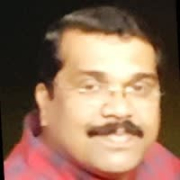

Dell PowerProtect DP (IDPA) and NetApp Cloud Backup are leading data protection solutions competing in the market. Based on user reviews, NetApp Cloud Backup has the upper hand in features and ease of deployment, while Dell PowerProtect DP (IDPA) excels in customer service and pricing.
Features: Dell PowerProtect DP (IDPA) is highlighted for its integrated data protection capabilities, ease of use, and robust performance. NetApp Cloud Backup is praised for its flexible cloud storage integration, advanced data management features, and superior cloud functionalities.
Room for Improvement: Users suggest Dell PowerProtect DP (IDPA) could improve in scalability, update processes, and reporting features. NetApp Cloud Backup users seek enhancements in reporting, better cost predictability, and improved integration.
Ease of Deployment and Customer Service: Dell PowerProtect DP (IDPA) is known for straightforward deployment and exceptional customer support. NetApp Cloud Backup enjoys positive feedback for its seamless cloud integration but less favorable reviews for customer service.
Pricing and ROI: Dell PowerProtect DP (IDPA) is favored for its cost-effectiveness and faster ROI. NetApp Cloud Backup, although more expensive, is seen as a worthwhile investment.


The PowerProtect DP series appliances is the integrated appliance solution from the Dell data protection appliances portfolio.
PowerProtect DP series appliance: Simple, efficient and agile data protection
The DP series is an all-in-one backup appliance that reduces the complexity of managing multiple data silos, point solutions and vendor relationships. The DP series simplifies deployment and management—while delivering powerful, enterprise-grade data protection capabilities for small, mid-size and enterprise organizations at a low cost-to-protect.
It is an integrated solution that offers complete backup, replication, recovery, deduplication, instant access and restore, search & analytics, seamless VMware integration — plus, cloud readiness with disaster recovery (DR) and long-term retention (LTR) to the cloud — all in a single appliance.
With the DP series, customers reduce their time-to-protect and become more agile with a solution that’s fast, protected more efficiently, can be recovered quickly and is reliable.
Simple to deploy, scale and manage
The DP series enables organizations to protect a broad ecosystem of applications quickly with a single system management console, consolidating workload protection, and eliminating infrastructure or data sprawl. The easy-to-use System Manager simplifies backups and automates daily tasks, including monitoring, management, reporting, analytics and search. The DP series delivers all-in-one data protection: protection storage and software, search and advanced monitoring and analytics, combined with cloud extensibility. It offers integration with VMware, SQL and Oracle management tools so that admins can use familiar UIs.
Powerful cloud, performance and efficiency
The DP series can scale to fit the needs of enterprises with the ability to protect up to 195 PB (logical) of data to the public, private or hybrid clouds with Cloud Tier, with no additional hardware.7 Plus, native Cloud DR with end-to-end orchestration allows enterprises to copy backed-up VMs from on-premises DP series environments to the public cloud with AWS, Azure, or VMware Cloud on AWS —3 clicks to failover and 2 clicks to failback.
The DP series provides support for modern applications like MongoDB and MySQL and is optimized for VMware. It provides fast, single-step recovery of individual files, dynamic policies for VMs as well as complete VMware images, which can be instantly accessed and migrated live from the DP series appliance back to the production environment (using vMotion) while still running, further simplifying and optimizing VM recovery. Plus, instantly access up to 64 VMs with up to 60,000 IOPS to meet the strictest SLAs.
Data protection search simplifies file-level-recovery (FLR) activities with an easy-to-use search interface. The DP series is also built on the industry-proven Data Invulnerability Architecture (DIA), for encryption, fault detection, and healing.
NetApp Cloud Backup is a fully integrated service for cloud backup and restoration. It was created to comply fully with NetApp's native data management software ONTAP, used for hybrid cloud experience. NetApp Cloud Backup is used to create backup and restoration for the protection and archiving of data, databases, and virtual machines related to the Cloud and On-Premises data in ONTAP. The way NetApp Cloud Backup works is by automatically creating block-level incremental backups. This ensures that the created backups are very fast and easy to restore. It is suitable for data protection regarding on-premises software as well as in the public cloud. NetApp Cloud Backup provides users with the ability to protect their cloud data at affordable prices and with a user-friendly interface so they don't need a lot of technical knowledge to be able to secure their cloud storage.
The copies created by NetApp Cloud Backup can be stored in the user's personal object storage in the cloud as well as on premises with StorageGRID - NetApp's storage platform. The backup copies can be restored to the original source or to a different source in Cloud Volumes ONTAP. NetApp Cloud Backup provides backups to AWS, Azure, and Google Cloud.
The features NetApp Cloud Backup provides include:
In addition to enhanced security and protection from malicious attacks, the advantages of using NetApp Cloud Backup include:
Abbasi P., a User at a financial services firm, likes that NetApp Cloud Backup is a completely agentless solution.
A Service Manager at a tech services company values its stability, scalability, and good technical support.
We monitor all Backup and Recovery reviews to prevent fraudulent reviews and keep review quality high. We do not post reviews by company employees or direct competitors. We validate each review for authenticity via cross-reference with LinkedIn, and personal follow-up with the reviewer when necessary.